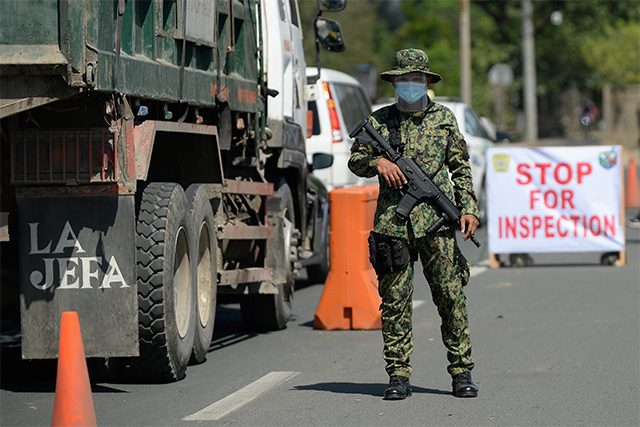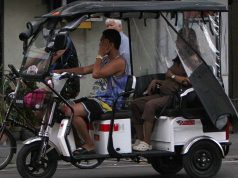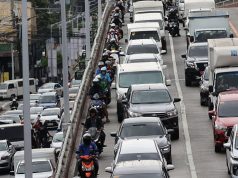
Metro Manila, which has the highest COVID-19 cases, shifted to a relaxed quarantine phase again despite the continuous surge in infections in the past eight days.
On Friday alone, the Philippines saw its highest-ever single-day tally of new infections at 17,231.
Concerns were raised on social media following the eased quarantine classifications announced on Friday, August 20.
The National Capital Region, Laguna and Bataan are now among provinces under the modified enhanced community quarantine starting on August 21.
The rest of the country, meanwhile, are covered by the general community quarantine with heightened restrictions and GCQ.
The implementation of all quarantine phases will end on August 31.
LOOK: Here are the new quarantine classifications until August 31.
Metro Manila, Laguna and Bataan join other provinces under the modified enhanced community quarantine (MECQ). | via @ricci_catalina
📸@pcoogov pic.twitter.com/NvPX7kS3QR
— Interaksyon (@interaksyon) August 20, 2021
Filipinos, however, cited the steep climb of COVID-19 infections while the healthcare system struggles to cope.
“Today is the craziest day we’ve had at the ER since the start of ECQ. Most of the rapid antigen tests we did came back positive (crying emoji) including entire families. Multiple DOAs (death on arrival). People begging to be admitted because everywhere else is full. Things aren’t better!” one user said.
“We went to ECQ to prevent hospitals from reaching full capacity, help our HCW from being overworked, and lower the daily cases but were we able to achieve that in the 2 week lockdown? I know we need to do something for the economy. But do you think this ECQ/MECQ is enough?” another user wrote.
Others lamented anew on the government’s clear priority on the economy over public health and science.
“MECQ without seeing decrease in cases. This pandemic response has been unscientific from the start. See you ECQ in the next few weeks,” one user said.
“If the basis of loosening from ECQ to MECQ is economic rather than preventing COVID, It just means the government would rather let you live and die with the virus than stopping its spread and help people not get sick or hungry w/ proactive, progressive, and sufficient policies,” one user wrote.
Some users even noted that the IATF only approved the shift to MECQ so that the government will not be responsible to release financial aid any longer.
“Basically the same quarantine measures. Ginawa lang MECQ so the government won’t be obliged to provide assistance to the Filipinos,” one user said.
“So basically, it’s still ECQ but without ayuda,” another user said.
How long should the lockdowns be?
It takes three to four weeks before infections start to go down, according to OCTA Research fellow Dr. Guido David based on the country’s history of the health crisis.
David expressed this in an interview with CNN Philippines last August 14.
“Whatever happens, we probably don’t see a downward trend yet on August 20. Even if maging effective ang ECQ, hindi natin makikita agad ang decrease. Maso-slow down muna yung increase, bababa yung reproduction number, then finally magkakaroon ng downward trend,” he said.
As of that day, OCTA noted that the reproduction rate of the COVID-19 transmissions in Metro Manila is 1.85 and that of Cavite is “almost two.”
“Ibig sabihin nito, dalawang tao na may dalang COVID-19, tatlo ang nahahawaan nila,” David said.
The Philippines saw the eighth straight day of five-digit increases in COVID-19 cases on August 18.
Reports on the ground have also showed parking lots, tents and corridors and even a chapel being converted into makeshift reception areas as hospitals are slowly running out of capacities to handle COVID-19 patients.
READ: Juxtaposed: Duque’s impassioned spiel and health workers’ struggles








